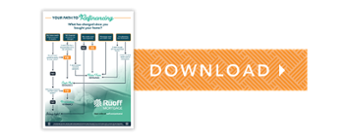
Courtney Christensen
Just like your original home loan, a refinance loan can be complicated. It doesn't have to be! Here is a breakdown of all the steps required to getting, and getting through, a refinance loan.
Strategize
Find out which refinance loans you qualify for and which loans will be best for you. Each loan will have different interest rates, which will influence your decision. By calculating your savings, and knowing your estimated credit score, you and your loan officer will be able to choose a loan program without an issue. To look into the types of refinance loans available, visit https://ruoff.com/refinance.
The kind of refinance you need will depend on what you want to do with it. How much money do you want to save every month? How much money do you want to get out of your home? How much time do you want to cut off your loan? Calculate these numbers as they directly affect your refinance goals and should be considered seriously.
Three main types of refinance loans are:
- Rate/Term – This loan is suitable for people who want to reduce the length of their loan, lower their monthly payment, remove PMI, or switch from an adjustable-rate mortgage to a fixed mortgage.
- Cash Out – This loan is good for those who want to get cash out of their home for things like debt consolidation, projects, or other major spending. It can also help raise your credit score by giving you more debt to pay off.
- Renovation – This loan helps people to make updates to their homes and gain instant equity in their homes. One significant benefit is that the amount you can borrow is based on the home’s projected value.
Click the button below to download our Refinance Readiness worksheet:
Gather Documents
Begin gathering the documents you will need for your refinance loan. This will usually include:
- Recent paystubs
- Banking account statements from the past few months
- Investment or retirement statements for the past few months
- Tax returns from the past three years
- Current mortgage
- Current property insurance
- Debt statements for student loans, credit cards, or car loans.
Your lender may request fewer or additional documents, so be prepared to provide the information that your lender needs to complete your loan.
Apply
This is where you will officially choose your lender for the duration of the loan process. Whether you want to partner with the loan officer who helped you buy your home, or whether you choose an entirely new one, it’s important to shop around and do your research. It’s a good idea to gather a few offers before selecting the lender that you like best.
Get Approved
Are you having trouble getting approved? The biggest threat to your approval is a low credit score. If you know you’re credit isn’t great, you need to build it up before applying for a refinance. Not only will it give you a better chance of getting approved, but you will also get a better monthly rate. The lower your credit score, the more you’re going to pay on a loan over time.
- Making all your payments on time.
- Keeping credit card balances low.
- Using a low-limit credit card.
- Reviewing your accounts for accuracy.
- Avoiding credit pulls when possible.
Get an Appraisal
Most refinances require an appraisal. An appraisal determines the value of our home. Appraisers are looking at the condition of the permanent parts of our house. So, patch walls, clean soiled carpets, keep your home pest-free, and get rid of odors. Broken windows, cracked ceilings, and leaks are all major issues that will need to be fixed immediately.
Send to Underwriting
At this point, your loan will be sent to an underwriter to review. This can take weeks, but your lender will update you at any point in the underwriting process. An underwriter must review and approve the loan before you can move forward with the refinance. This part of the process is where our credit report will be pulled. You may be knocked out of the process if you have financial red flags like bankruptcy, low credit, or late payments.
Go to Closing
During the closing process, you’ll be signing lending disclosures, promissory notes, a new deed, and of course, your new mortgage agreement. Once the ink is dry, you're ready to enjoy your new-to-you mortgage and hopefully have a bit more financial freedom in the process!
.png?width=375&height=150&name=MicrosoftTeams-image%20(63).png)

